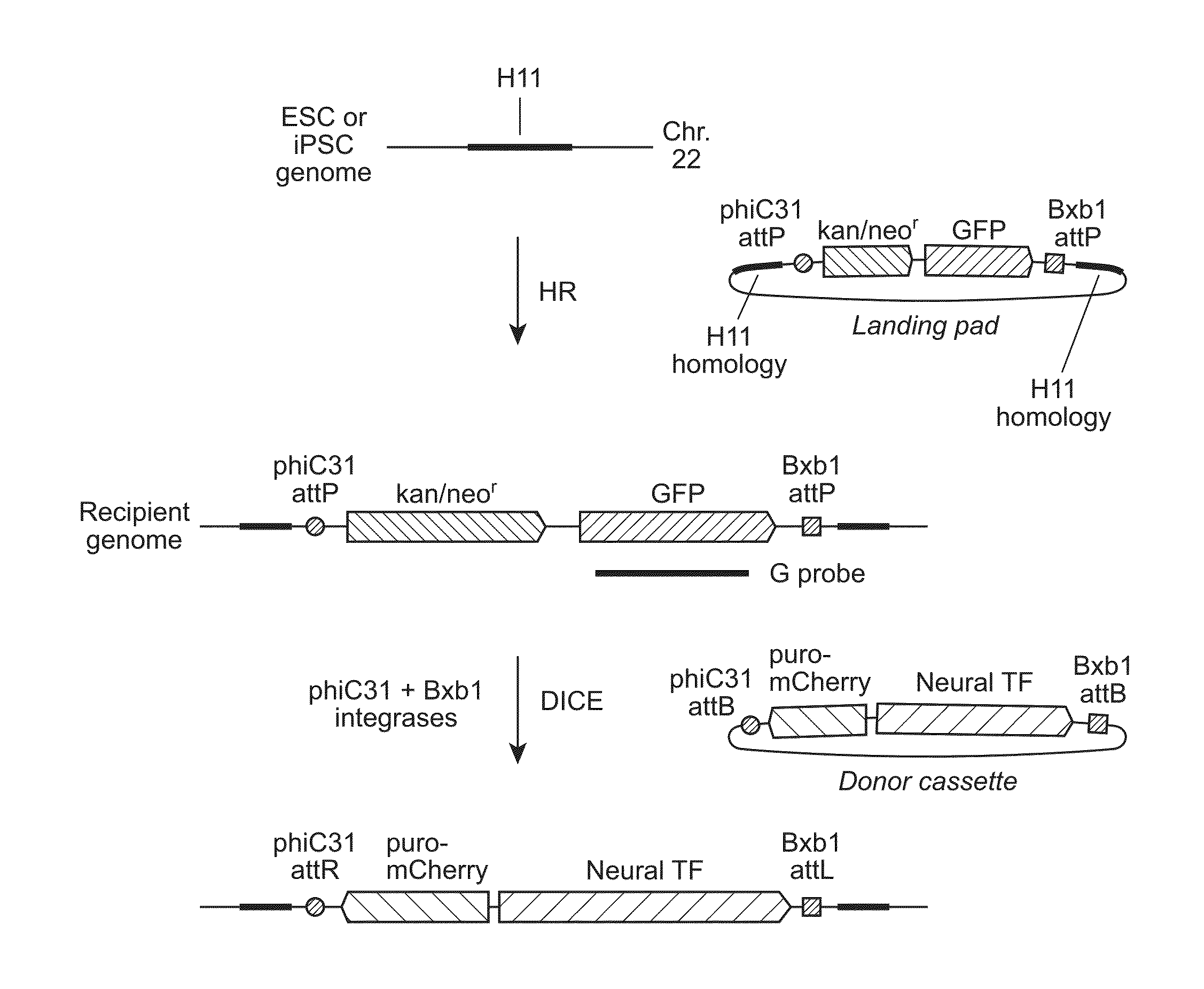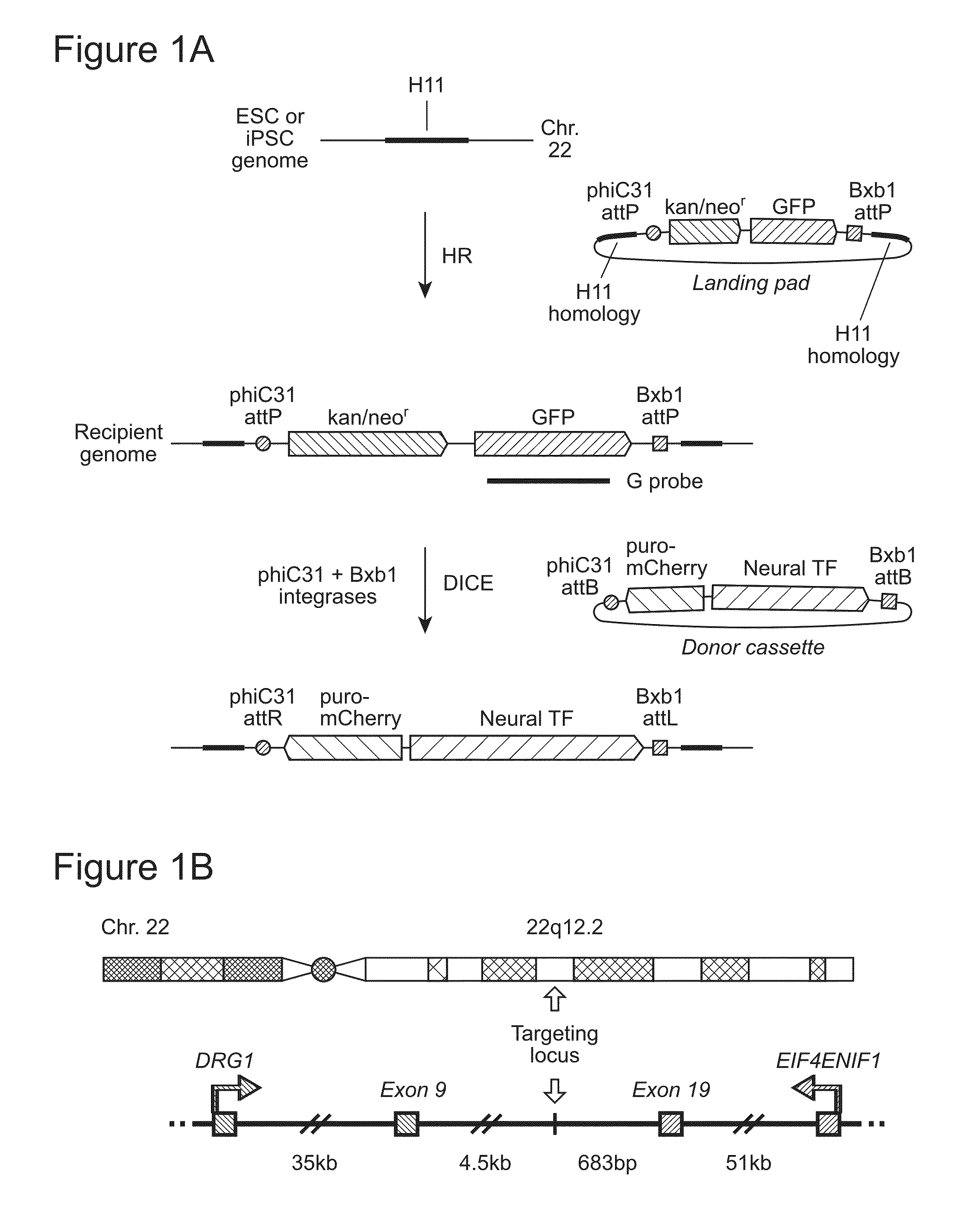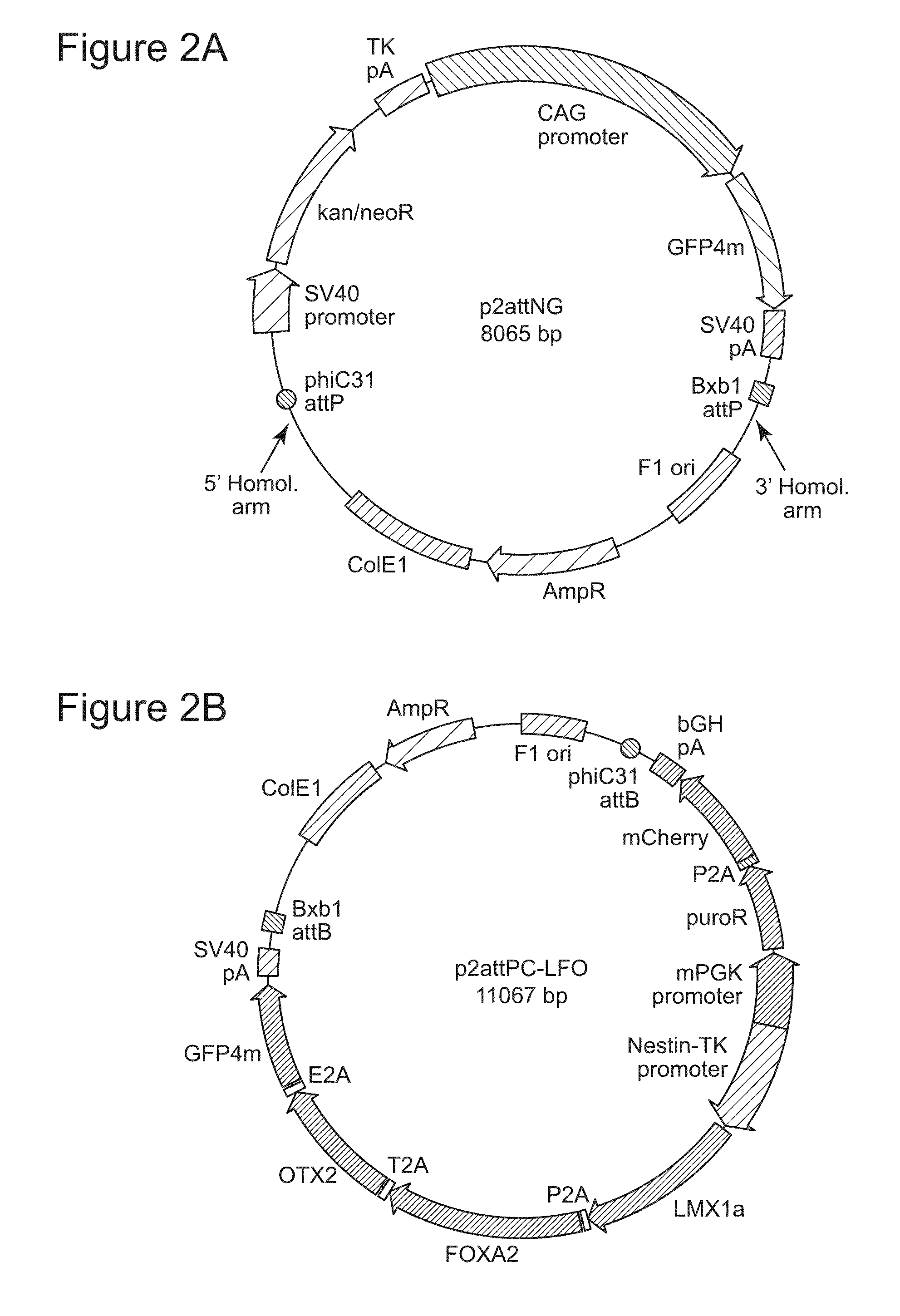Site-Specific Integration of Transgenes into Human Cells
a technology of human cells and transgenes, applied in the field of site-specific integration of transgenes into human cells, can solve the problems of affecting the precision of experiments, affecting the accuracy of experiments, and the current technology of inserting transgenes into human genomes has serious drawbacks, so as to facilitate recombination and facilitate recombination
- Summary
- Abstract
- Description
- Claims
- Application Information
AI Technical Summary
Benefits of technology
Problems solved by technology
Method used
Image
Examples
example 1
H11 Locus and DICE
[0142]We previously described a transcriptionally and recombinationally active, ubiquitously expressed murine locus called Hipp11 (Hippenmeyer, et al. (2010) Neuron, 68, 695-709; Tasic, et al. (2011) Proc Natl Acad Sci USA, 108, 7902-7907; Tasic, et al. (2012) PLoS One, 7, e33332). Hipp11 is located in an intergenic region on chromosome 11, flanked by the two genes Drg1 and Eif4enif1 (Hippenmeyer, et al., 2010, supra). The criteria for identification of the Hipp11 locus included absence of disruption of regulatory elements or genes, as judged by sequence annotation, an intergenic region in a gene dense area, a location at the convergence between two genes transcribed in opposite directions, and apparently ubiquitous transcriptional activity, as reflected by broad spatial and temporal expressed sequence tag (EST) expression patterns, indicating ubiquitous transcriptional activity. This latter feature is especially important in stem cells, where during differentiatio...
example 2
Homologous Recombination at the H11 Locus and Generation of Recipient Cell Lines
[0147]We first utilized spontaneous homologous recombination to insert the landing pad cassette into the H11 locus in H9 ESC. The targeting vector contained an expression cassette carrying the neomycin resistance and GFP genes, flanked by the attP sites for phiC31 and Bxb1 integrases and two homology arms, of 5-kb and 3-kb (FIG. 2A). The targeting vector was linearized by digestion with SwaI and AscI and introduced into H9 cells by an optimized nucleofection protocol. G418 selection was started two days later and continued for 14 days, after which GFP-positive clones were picked and screened by genomic PCR and Southern blotting. Out of 98 clones analyzed, 6 underwent the desired recombination event (FIG. 3A), indicating a targeting frequency of 6.1% in H9 ESC (Table 2).
TABLE 2Summary of homologous recombination experiments for generation ofrecipient ESC and iPSC lines. The last column shows the percentag...
example 3
Characterization of ESC and iPSC Recipient Stem Cell Lines
[0154]To identify ESC and iPSC recipient lines that have attP sites anchored at the H11 locus for use in further experiments, we first screened some of the correctly targeted clones for integration copy number by Southern blotting, using a probe directed to the GFP gene in the landing pad cassette (FIG. 1A). To determine whether one or both of the H11 alleles had been recombined, we performed genomic PCR using primers targeting regions around H11 in the human genome (FIG. 4B). The results showed that all clones tested that had been generated by spontaneous recombination had integrated a single copy of the landing pad, while some of the tested clones that resulted from TALEN-assisted recombination had integrated multiple copies (FIG. 5A, FIG. 4A). Some of the single-copy clones were sequenced to examine whether there were any mutations in the region, including the landing pad cassette and the homology arms. Mutations were dete...
PUM
| Property | Measurement | Unit |
|---|---|---|
| Recombination enthalpy | aaaaa | aaaaa |
Abstract
Description
Claims
Application Information
 Login to View More
Login to View More - R&D
- Intellectual Property
- Life Sciences
- Materials
- Tech Scout
- Unparalleled Data Quality
- Higher Quality Content
- 60% Fewer Hallucinations
Browse by: Latest US Patents, China's latest patents, Technical Efficacy Thesaurus, Application Domain, Technology Topic, Popular Technical Reports.
© 2025 PatSnap. All rights reserved.Legal|Privacy policy|Modern Slavery Act Transparency Statement|Sitemap|About US| Contact US: help@patsnap.com



